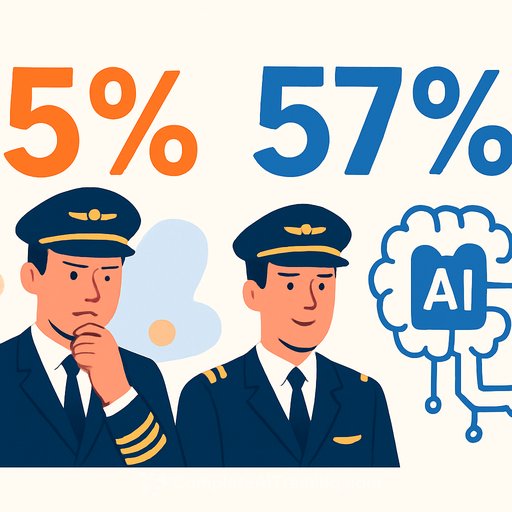Oracle's Leadership in Strategic Cloud and AI Infrastructure: A Catalyst for Long-Term Growth in 2025
In 2025, the cloud and AI infrastructure market is shifting due to increasing demand for high-performance computing, data sovereignty, and enterprise AI solutions. Oracle stands out by leveraging distributed cloud architecture, strategic alliances, and cost-efficient infrastructure. The key question for executives and strategists isn't whether Oracle can compete with hyperscalers like AWS and Microsoft, but how it is outpacing them in powering the next phase of digital transformation.
A Strategic Bet on AI and Distributed Cloud
Oracle’s expansion into AI infrastructure centers on its Oracle Cloud Infrastructure (OCI), which supports enterprises deploying large-scale AI models. The Abilene, Texas datacenter, a gigawatt-scale facility, hosts training workloads for OpenAI and other partners, making it a cornerstone of Oracle’s AI ambitions. Additionally, the Stargate joint venture builds a global AI infrastructure network, positioning Oracle as a neutral, high-capacity provider for startups and enterprises alike.
Oracle’s distributed cloud strategy blends self-built datacenters with strategic leasing agreements. For example, a 15-year, $15–20 billion deal with Crusoe provides 660 megawatts of capacity in Abilene, enabling Oracle to avoid the capital intensity of full construction while keeping control over critical infrastructure. This hybrid approach enabled Oracle to add 2 gigawatts of capacity between 2023 and 2025, accelerating its scalability.
Competitive Advantages: Networking, Cost, and Partnerships
Oracle gains an edge through its networking architecture using RoCEv2 (RDMA over Converged Ethernet version 2), which enables ultra-low-latency communication between nodes. This reduces capital expenditures by 20% compared to competitors and earned Oracle a ClusterMAX™ Gold rating. The company’s investment-grade credit rating also lowers its cost of debt for GPU deployments, a significant advantage since infrastructure costs dominate AI budgets.
Strategic partnerships amplify Oracle’s reach. Collaborations with OpenAI, xAI, and Nvidia—supported by Larry Ellison’s direct involvement—strengthen Oracle’s role in AI development. Its Asia-Pacific expansion includes a major GPU deal with ByteDance (TikTok’s parent company), tapping into the region’s growing AI demand. Oracle also operates distributed cloud services across 200+ regions, addressing regulatory and data residency requirements, making it a preferred choice for governments and global enterprises.
Real-World Impact: Case Studies in Enterprise Transformation
Oracle's infrastructure delivers measurable results across sectors. Oracle Red Bull Racing uses OCI’s high-performance computing and Arm-based cores to run 1 billion race strategy simulations annually, increasing accuracy while reducing costs. The University of Melbourne achieved a 20% performance boost in fog computing, speeding up research. India’s largest agricultural cooperative, IFFCO, modernized its IT with Oracle Exadata and E-Business Suite, realizing a 7X performance improvement. The Children’s Medical Research Institute cut simulation time from 30 days to 5 days using Oracle AI, lowering costs by 30%. These examples highlight Oracle’s capability to combine AI, distributed cloud, and compliance-ready infrastructure for industry-specific solutions.
Financials and Future Outlook
Oracle’s cloud infrastructure revenue grew 45% in its latest quarter, surpassing analyst expectations. Larry Ellison forecasts $130 billion in contracts over the next 12 months, positioning Oracle to capture a growing share of the AI infrastructure market. Analysts expect AI-related revenues to soon represent over half of Oracle’s cloud business, supported by its neutrality in AI development and scalable offerings for startups and enterprises.
Investment Implications
Oracle’s alignment with AI and cloud megatrends offers strong growth potential. Its hybrid infrastructure model, cost advantages, and enterprise partnerships create a durable competitive moat. Risks include intensifying competition from hyperscalers and neocloud providers like Snowflake and Databricks. Maintaining its cost edge and expanding its AI ecosystem will be critical.
- Long-term growth potential: Oracle’s AI infrastructure investments are positioned to scale with the global demand for generative AI and large language models.
- Diversified revenue streams: Partnerships with ByteDance, OpenAI, and enterprises across the Asia-Pacific and Europe provide recurring revenue visibility.
- Valuation discipline: Oracle’s investment-grade status and efficient capital expenditure structure make it a lower-risk option compared to high-growth neoclouds.
In a market where infrastructure limits AI innovation, Oracle’s distributed cloud and AI capabilities offer a strong foundation for long-term value creation. Executives and strategists seeking exposure to the next phase of digital transformation should consider Oracle’s strategic positioning as a compelling opportunity.
Your membership also unlocks:






